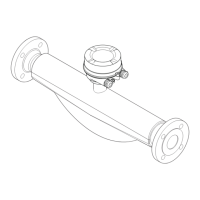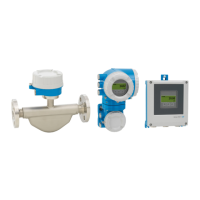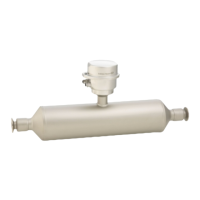Proline Promass F 300 EtherNet/IP Installation
27
The following device versions are recommended for versions with thermal insulation:
• Version with extended neck for insulation:
Order code for "Sensor option", option CG with an extended neck length of
105 mm (4.13 in).
• Extended temperature version:
Order code for "Measuring tube material", option SD, SE, SF or TH with an extended neck
length of 105 mm (4.13 in).
• High-temperature version:
Order code for "Measuring tube material", option TT or TU with an extended neck length
of 142 mm (5.59 in).
NOTICE
Electronics overheating on account of thermal insulation!
‣
Recommended orientation: horizontal orientation, transmitter housing pointing
downwards.
‣
Do not insulate the transmitter housing .
‣
Maximum permissible temperature at the lower end of the transmitter housing:
80 °C (176 °F)
‣
Thermal insulation with extended neck free: the insulation is omitted around the
extended neck. We recommend that you do not insulate the extended neck in order to
ensure optimum dissipation of heat.
A0034391
6 Thermal insulation with extended neck free
Low-temperature version: It is generally not necessary to insulate the transmitter
housing . If insulation is provided, the rules that apply are the same as those for
thermal insulation.
Heating
NOTICE
Electronics can overheat due to elevated ambient temperature!
‣
Observe maximum permitted ambient temperature for the transmitter .
‣
Depending on the fluid temperature, take the device orientation requirements into
account .
NOTICE
Danger of overheating when heating
‣
Ensure that the temperature at the lower end of the transmitter housing does not
exceed 80 °C (176 °F).
‣
Ensure that convection takes place on a sufficiently large scale at the transmitter neck.
‣
Ensure that a sufficiently large area of the housing support remains exposed. The
uncovered part serves as a radiator and protects the electronics from overheating and
excessive cooling.

